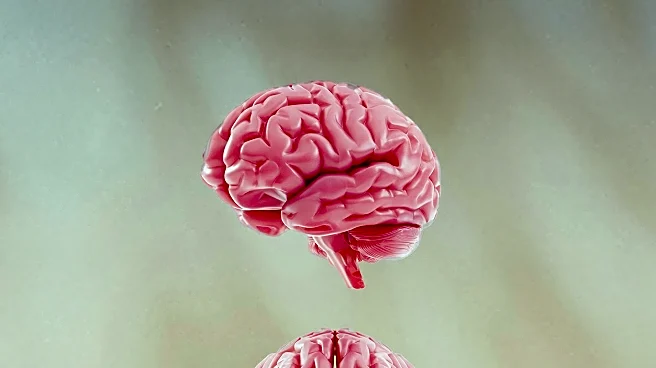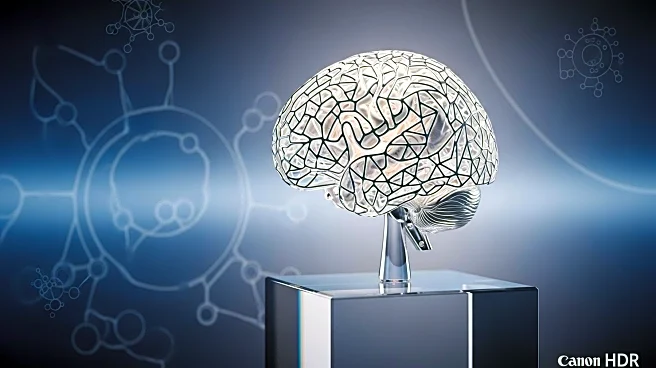What is the story about?
What's Happening?
A recent study conducted by the UCLA Consortium for Neuropsychiatric Phenomics has explored the reconfiguration of functional brain hierarchy in individuals diagnosed with schizophrenia. Utilizing resting-state fMRI data, the research analyzed brain dynamics through a model-based thermodynamic framework, focusing on the fluctuation-dissipation theorem (FDT). The study involved 50 individuals with schizophrenia and 50 healthy subjects, examining the hierarchical organization of brain areas associated with symptom factors. The research identified significant differences in brain hierarchy between the two groups, using perturbability maps to highlight regions with the largest deviations. The findings suggest that violations of the FDT, indicative of non-equilibrium in brain dynamics, are more pronounced in individuals with schizophrenia, reflecting a reconfigured functional hierarchy.
Why It's Important?
The study's findings have significant implications for understanding the neurobiological underpinnings of schizophrenia. By identifying deviations in brain hierarchy, the research provides insights into the asymmetric and directional information flow within the brains of individuals with schizophrenia. This could lead to improved diagnostic tools and therapeutic strategies targeting specific brain regions. The study also highlights the potential for using thermodynamic principles to assess brain dynamics, offering a novel approach to studying psychiatric disorders. The broader impact of this research may extend to enhancing personalized treatment plans and advancing the field of neuropsychiatry.
What's Next?
Future research may focus on further validating these findings across larger and more diverse populations. There is potential for developing targeted interventions that address the specific brain regions identified as having significant FDT violations. Additionally, the study opens avenues for exploring the application of thermodynamic frameworks in other psychiatric disorders, potentially leading to a deeper understanding of brain dynamics and their role in mental health. Collaboration between neuroscientists and clinicians could facilitate the translation of these findings into clinical practice, improving patient outcomes.
Beyond the Headlines
The study raises ethical considerations regarding the use of advanced neuroimaging techniques and thermodynamic models in psychiatric research. It prompts discussions on the accessibility and affordability of such technologies in clinical settings. Furthermore, the research underscores the importance of interdisciplinary collaboration in advancing mental health research, highlighting the need for integrating insights from physics, neuroscience, and psychiatry.
AI Generated Content
Do you find this article useful?













